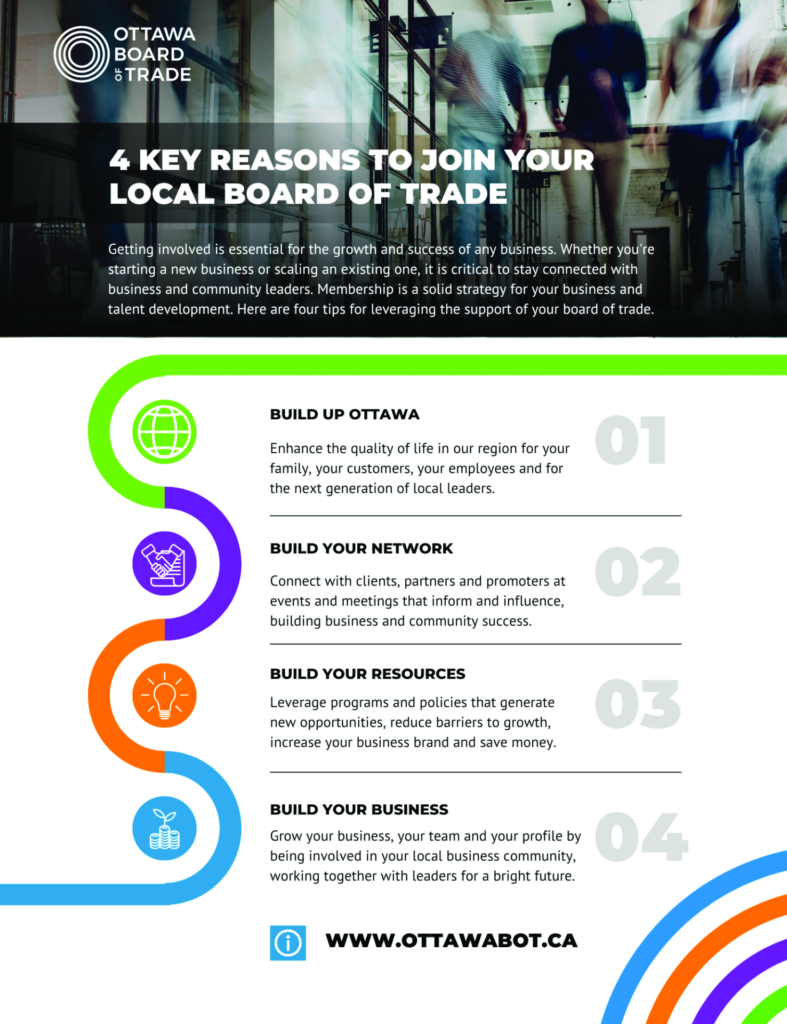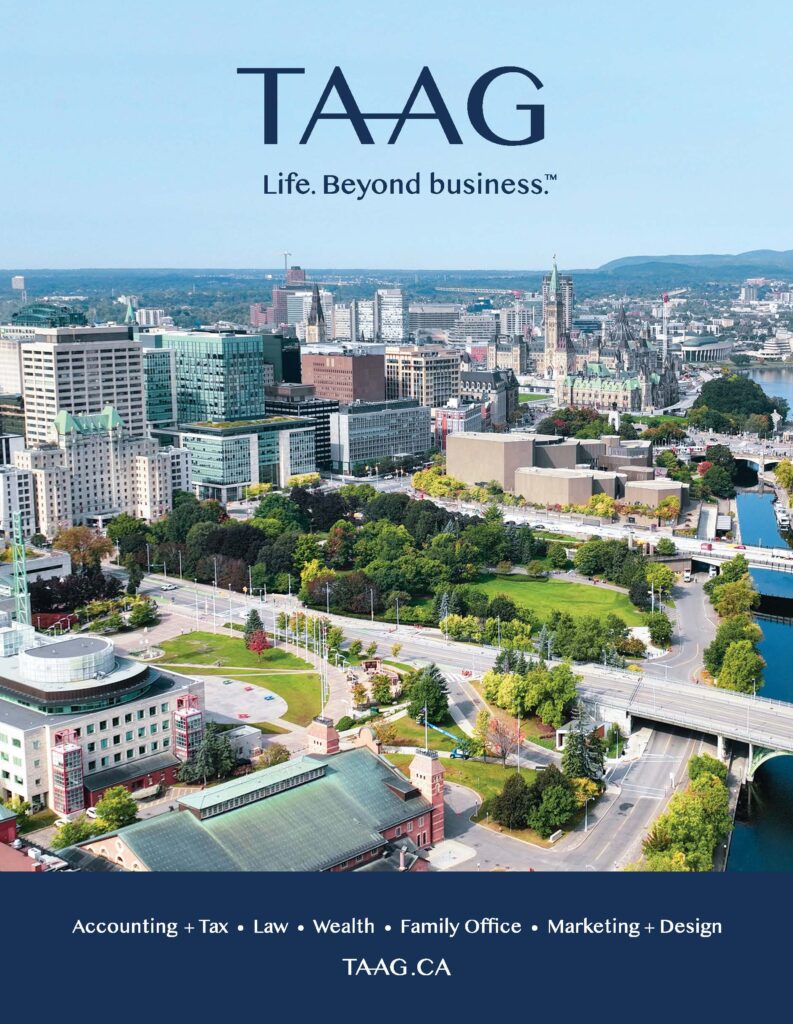Feature: Bridging the Talent Gap
Employers can no longer rely on old methods to find new people
By Leo Valiquette
Employers can’t build a successful business without a great team. But in today’s marketplace, top talent won’t just beat a path to their door. Hiring the best people has become an art that local organizations are having to master quickly.
According to the 2016 Ottawa Business Growth Survey, access to skilled labour is the single greatest challenge that mid- and large-sized businesses face. Forward-thinking organizations are filling the gap with creativity and a longer-term view of what it means to recruit, while post-secondary institutions are adapting their programs to focus on what employers need.
Cheryl Jensen, President of Algonquin College, says it’s a culture shift that calls on everyone to think differently.
“When we ask employers what they need, we hear the same message everywhere—their needs are changing,” Jensen says. “We need to focus on building a spirit of entrepreneurship and innovation in all of our programs … these skills are overwhelmingly what employers are looking for.”
Right now, though, the perfect combination of technical knowledge and soft skills seems difficult to find.
‘Post and pray’ is no longer enough
Not so long ago, recruitment for most positions was reactive—when there was a job to fill, it was posted to the careers section of the company website, one of the big online job boards, and through LinkedIn. A manager might even get lucky with a good referral.
But this “post and pray” approach—waiting for that perfect candidate to apply during that short window of opportunity—just doesn’t cut it anymore, says Heidi Hauver, vice president of human resources at Pythian, an Ottawa-based information technology services company.
Employers must look beyond filling the next open position. Hauver recommends they adopt a proactive sourcing strategy that builds relationships with prospective candidates, long before there might be an opportunity for them to join the team.
“We come across candidates all the time who we’d love to have work for us, but the timing isn’t right,” Hauver says. “You have to embrace the fact that folks need to spread their wings, and they do move and change opportunities … you may have to maintain a relationship and cultivate it over time.”
Karen Letain, director of marketing and communications with Invest Ottawa, recently completed an extensive survey and consultation with member businesses of the Kanata North Business Improvement Association. For some roles, there just isn’t an adequate pool of qualified and available candidates within the national capital region. That means employers have to be more creative about recruiting from outside the region.
“They do need to be bolder about how they look for talent, and how they can promote themselves and the city as a great place to be,” Letain says.
Part of that is being more flexible about work arrangements, she says, citing the example of one company that has its vice president of sales managing a local team from San Francisco.
That’s been the approach at Pythian, where about 250 of its 400 staff work remotely for at least part of the week. If the company finds a great hire in, say, Montreal, it makes arrangements for that hire to work from Montreal, rather than forcing them to pull up stakes and relocate their family, Hauver says.
The need to adopt a more proactive and open-minded approach to talent recruitment and retention isn’t limited to high-tech companies.
Hydro Ottawa has been caught head-On by the “silver tsunami” as the boomer generation hits retirement age. Almost 44 percent of its trades and technical workforce is expected to retire within a decade.
The utility has adopted a diversity strategy to recruit from among women and minority groups that haven’t been well-represented in the industry. The strategy includes a partnership with Electricity Human Resources Canada and Algonquin College to develop a sustainable mentorship program that connects women in utilities with graduates of the college’s Women Into Electrical Engineering Technology program.
Teaching versatility and resilience
Jensen says that partnerships like these are just one way to create integrated learning opportunities that will prepare students for the workforce.
Algonquin College’s IgniteAC centre, which comes with its own entrepreneur-in-residence, gives students an opportunity to test business ideas in a positive environment where they can learn from their mistakes.
“The technical skills we teach our learners have become a given. Employers today need people who can be resilient, who can learn from failure and be better for it,” says Jensen. “These are teachable skills that employers are looking for, and they’re the same skills our students want to learn.”
Jensen says that employers are also looking for transferrable skills like problem solving, communication, and collaboration—things that used to be considered “nice-to-have”, but that are now recognized as an essential component of increasing productivity.
Lise Bourgeois, president of La Cité, Ottawa’s only francophone college, sees partnerships as central to keeping up with the pace of change in industry.
“In the past, learning was a field dedicated to schools,” says Bourgeois. “Today, we need enterprises to engage with us, to become part of the learning process.”
She points to La Cité’s new innovation laboratory—a multi-media idea incubator that can be used by any sector of the college—as an example of how post-secondary institutions can partner with businesses to develop students who are versatile and adaptable.
“A few years ago, we might have built this as a stand-alone laboratory,” she says. “But instead, we have created an open, multi-disciplinary space where students and employers can work together to develop creative and innovative solutions.”
Experiential learning: from boardroom to classroom
The value of such partnerships isn’t lost on David McCormick, president of Ottawa’s Herzing College campuses. The private not-for-profit career training school engages with employers regularly, to develop and refine its courses of study to include industry accreditation where required. They also provide students with practical work placements of four to eight weeks at the end of their programs.
“We can never have enough potential employers for our students,” McCormick says, adding that Herzing’s placements give employers a cost effective way to invest in future employees, and provide students with a practical understanding of the culture of an industry.
Such industry engagement is just as crucial at the University of Ottawa’s Telfer School of Management, from its hands-on Executive MBA program for seasoned business professionals, to undergraduates who may need that extra polish on their skill set to be marketable.
“We’re always adjusting programs from employer feedback to make our graduates more plug-and-play in the marketplace,” says Alain Doucet, Telfer’s assistant dean of external relations. A mentorship program with industry is also an essential component, he added, “to give students the best possible edge when they graduate.”
The need to be more proactive by building that “applicant funnel,” to be more flexible with working arrangements, to make that extra effort to engage employees, and to consider partnerships across industry or with local educational institutions—these are all critical elements of the game plan employers today must adopt to build and retain the teams they need.
It’s not an option, but a necessity.
Leo Valiquette is a freelance writer and marketing communications/media relations consultant who lives in Stittsville. He is the former editor of the Ottawa Business Journal.
How to Find the Best Candidates
Look beyond the next vacancy: Build relationships with potential candidates for future opportunities.
Look beyond your front door: Cast a wider geographic net, and be flexible about letting employees work off-site.
Look beyond yourself: Seek partners, such as educational institutions, to help you build an “applicant funnel”.


























